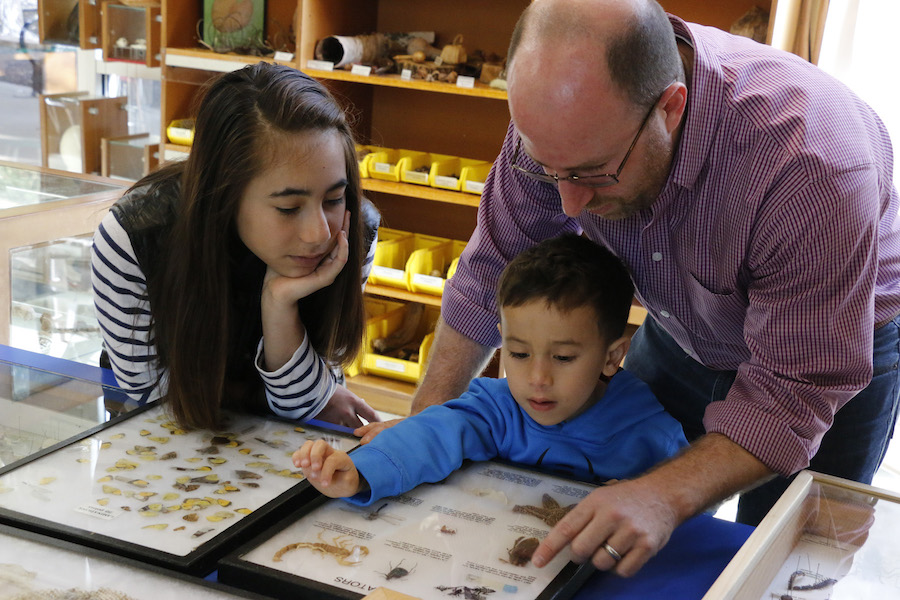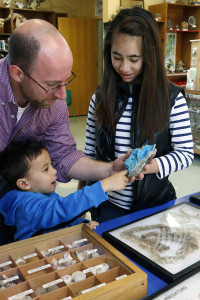Nature Exchange Rocks for Budding Scientists at the Dallas Zoo
Originally published in the Dallas Zoo’s Zoo News, Summer 2015
When Robert Lavinsky, Ph.D., was a young boy, he developed a passion for minerals. By the time he turned 16, he was attending rock and mineral shows and made his first significant purchase – a $1,000 purple fluorite crystal on a barite matrix. His mother was furious! But Dr. Lavinsky persuaded her to let him keep it and years later, created The Arkenstone and iRocks.com, successful businesses built on mineral and fossil collecting. He hopes to inspire youth to pursue their interests in science and he has donated interesting mineral specimens to the Hillcrest Foundation Nature Exchange at the Lacerte Family Children’s Zoo for many years.
“I find the tactile and three-dimensional experience of owning a rock or holding a fossil to be a thrill,” Lavinsky said. “By putting actual solid objects in kids’ hands, I hope we will inspire them to stick with science past the point where it becomes ‘nerdy’ in school, and encourage them to pursue their interests.”
Lavinsky travels the globe in search of the world’s most dramatic specimens of minerals. He has donated $10,000 to $20,000 of inventory to the Nature Exchange each year from purchases in China or from his travels throughout the world. A few of the most captivating pieces donated to the Nature Exchange include gold, silver, and a large group of intense blue Chinese hemimorphite specimens. “I hope that expanding the diversity of the collection and providing pieces from all these crazy, faraway places makes it interesting,” Lavinsky said.
In addition to rocks and minerals, the Nature Exchange, sponsored in part by a grant from the Hillcrest Foundation, has accepted almost any natural artifact from the 28,000 traders that are on file since the attraction opened in 2000. The collection includes sand from the Sahara Desert (worth 400 points) and from Acapulco (worth 200 points). Items can be as simple as an acorn, whose banked values vary upon the amount of knowledge traders provide – but for acquisitions, are usually valued at 10 points. One of the most interesting items available for trade is a 5-pound quartz crystal, valued at 10,000 points.
“The goal of the Nature Exchange is to get people outdoors to look around – not pass by interesting things, ‘~said Melody Wood, supervisor of the Lacerte Family Children’s Zoo. “It provides a great opportunity to hone your observational skills.”
Although often mistaken for a gift shop in the Lacerte Family Children’s Zoo, the Nature Exchange does not sell any of its items. The facility is open every day during regular Zoo hours. The Nature Exchange is staffed by Zoo employees and knowledgeable volunteers. They always are seeking volunteers who have a background in geology, botany, or other sciences and can commit to working weekly for at least four hours.
Summer vacation is an ideal time for exploring parks, vacation destinations, or even backyards for interesting artifacts – whether they are plant-, mineral-, or animal based. Bring your discoveries to the Nature Exchange and learn how to value the beauty of nature.

Visit the Dallas Zoo or read the original article as published in the Zoo News.
Interested in teaching your kids about fine minerals and crystals? Check out our post on A Quest for Shiny Purple Crystals, inspiring mineral and crystal collecting for kids.
